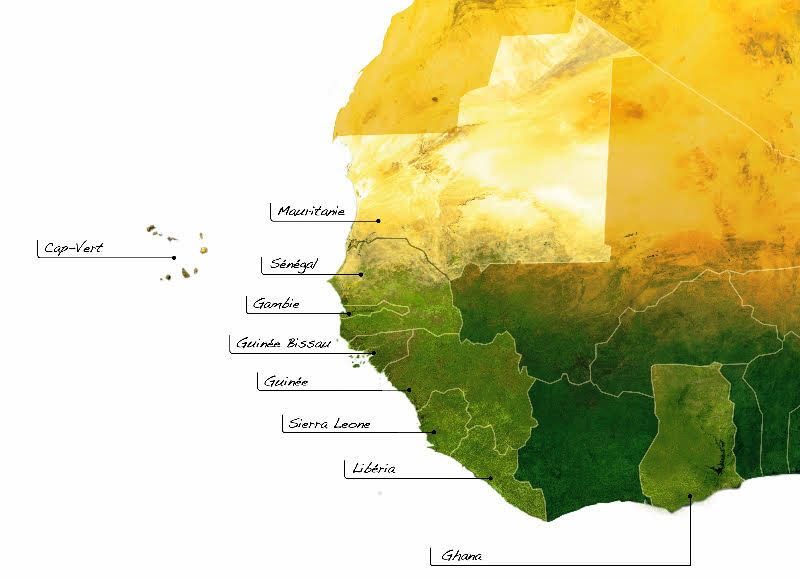The media in the Implementation of WARFP-SL
Sierra Leone’s Fisheries sector has been contributing immensely to the country’s economic development. This is true, with reports of it (the fisheries sector), contributing about 10% to the country’s GDP, as stated by the country’s PRSP. This is an encouraging contribution, taking into account Sierra Leone’s steady progress in terms of development.
Development issues in the fisheries sector
There are a number of development issues that have been detected insofar as the Fisheries sector could go. In the first place, the country has a coastline that is fed by a number of rivers and abundant rainfall and this in turn provides some elements for a productive marine fisheries. The potentials of Sierra Leone in marine resources could not be underestimated. From a realistic perspective, the fisheries sector in Sierra Leone must be providing employment for an estimated 100,000 persons directly and, indirectly for about 500,000 persons, which must be representing about 10% of the country’s population. Taken as a practical and realistic example, the coastal areas – Bonthe, Shenge, Tombo etc; are made up of mostly fishing population, and about 25% of the male population of working age is reported to be involved in part-time or full time fishing. Importantly, when revenue comes from the fish sector, it directly or indirectly benefits the country.
Many challenges
Notwithstanding this encouraging contribution of the fisheries industry to Sierra Leone’s development agenda, there are a number of challenges the sector is faced with .In the first place, the sector, from the look of things has not been well managed and as such provides substantially lower returns than expected. Also, destructive fishing gears and practices – inshore shrimp trawling, nets with tiny mesh sizes are damaging susceptible nursing grounds and capturing baby fish.
I need not overstate the aspect dealing with the high level of illegal fishing that is ongoing. There has not been an added local value to fish for the simple fact, that a good percentage of the fish that is caught by industrial vessels is transshipped at sea for export.
WARFP-SL
There is, therefore, the urgent need to strengthen the capacity of the country so that its fish industry could be well managed, by, among other ways, reducing illegal fishing, and thus increasing on the local value to fish products across the country. There is the West Africa Regional Fisheries Programme (WARFP) with offices in Senegal, Liberia, Sierra Leone, and Cape Verde. In Sierra Leone, the major objective of the programme is to strengthen the capacity of the country so as to be able to effectively manage its fisheries. The programme is looking out for key outcomes by the end of the first phase; ensuring improved governance indicators, working towards reducing the level of illegal fishing going on and helping to increase local value added to the fish product caught.
In working towards ensuring the first outcome, the programme will be working towards: the establishment of a number of ‘Territorial Use Rights Fisheries’ (TURFs) in targeted coastal fisheries; working towards the establishment of clear principles and policies aimed at increasing the wealth in fisheries through strengthened rights and equitable allocation of these rights.
Programme components
Component 1: Good governance and sustainable management of the fisheries: This component seeks to increase the economic profitability and environmental sustainability of the fisheries resources of Sierra Leone by strengthening and modernizing the regulatory framework for the industrial fisheries. The strategies would include building/strengthening the MFMR capacity to manage the fisheries resources, introduction of ‘Total Allowable Catches’ (TAC) and increasing the level of license fees and penalties for infringements.
The component would also target the artisanal fisheries by supporting full registration and licensing of all fishing vessels and fishing gears in use, as well as empowering fishing communities to co-manage their marine resources through the introduction of Marine Protected Areas (MPAs) that would evolve into the Territorial Use Rights Fisheries (TURFs).
Component 2: Reduction Illegal Fishing: This component of the project would support strengthening of the Monitoring, Control, and Surveillance (MCS) system of Sierra Leone and the West African Sub region to reduce ‘llegal, Unregulated and Unreported’ (IUU) fishing and ensure that industrial fishing operations are carried out within the provisions of the laws of Sierra Leone.
Component 3: Increasing the contribution of the marine fish resources to the local economy through value addition to fish products from Sierra Leone: Fish products from Sierra Leone are not certified to be sold in the European fish market because of the lack of a quality standards institutional capacity. Therefore the participation of Sierra Leone in the international fish trade is limited. Moreover, the lack of landing sites with basic infrastructure for prevention of fish product contamination and adding value to fish products means that the potential to increase the contribution of the marine fisheries resources to local economy is currently minimal. This component of the WARFP will provide a fish landing sites cluster with value addition facilities that would attract private sector investments. The Programme will establish a certified public laboratory and competent sanitary authority in Sierra Leone to facilitate the process of gaining access to the international fish market
Call for media support:
Then comes in the critical aspect of what should be the role of the media in ensuring the successful programme implementation in Sierra Leone. One cannot underestimate the critical role of a country’s media in its development process. We have seen how, over the years, the media has helped in rebuilding a post war country like Sierra Leone.
From a communications specialist viewpoint, the successful implementation of the WARFP in Sierra Leone (WARFP-SL) depends on a number of factors, one of them, the contribution of the media. If the public is to fully appreciate the role and mandate of the WARFP-SL, it depends on the type of information it shall be getting through the media. It therefore means the need for media support. WARFP-SL looks forward to working with the media because if the capacity of stakeholders in the fisheries sector is to be appreciated and enhanced; if they are to fully participate in policy formulation and implementation, then, it depends on the level of communication and information flow taking place. This is why the media’s support is needed at all times.
Information dissemination is key to the success of any activity. The public could get a common understanding of challenges facing the fish sector, when the media is well equipped and well prepared to report on such issues. I am therefore, personally looking forward to working with journalists, interested in reporting on fisheries management issues.
Illegal fishing alone accounts for an estimated $30 million revenue loss annually for a country like Sierra Leone. During the official launch of the Programme in Sierra Leone, the Minister of Marine Resources, Dr. Soccoh Kabia assured that the loss of $30M annually through ‘Illegal, Unregulated and Unreported’ fishing activities “is totally unacceptable to the government…” (http://www.globaltimes-sl.org/news1487.html). Institutions that facilitate illegal fishing should be seen as corrupt and as such they tend to undermine the effective management of the fisheries. However, if the media take a lead in this fight, the better for us as a nation.
Stay with Sierra Express Media, for your trusted place in news!
© 2011, https:. All rights reserved.




